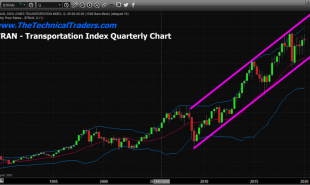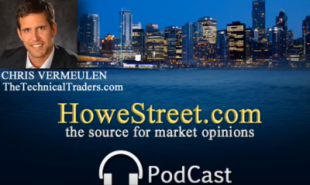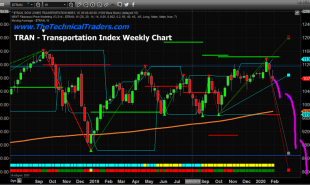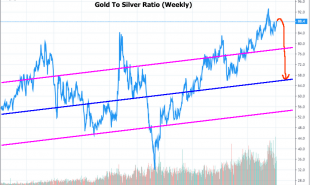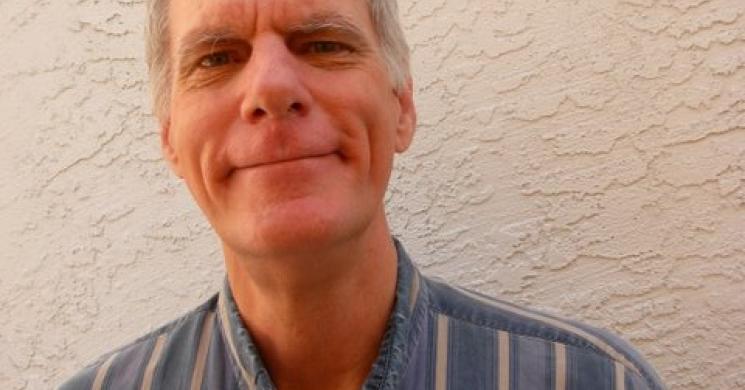
The concept of fractional reserve banking was created in the Western Hemisphere sometime around the year 1600. It occurred earlier in China, but this happened in isolation and was not known about in the West. Previous to fractional reserve banking, people exchanged gold and silver for the things they wanted to purchase. Using gold and silver was a big improvement over barter. In the early seventeenth century it became common for people to purchase goods with notes issued by goldsmiths. The owner of the precious metal would take it to a goldsmith, who had a vault, for safe keeping. The goldsmith would issue notes which could be used to redeem the gold. The notes could be used for trade in lieu of the gold. People began to prefer to hold the notes instead of the gold. Goldsmiths began issuing notes on the gold, that belonged to other people, that was accumulating in their vaults and lending them out for interest. This is how some goldsmiths turned into bankers practicing fractional reserve banking. It worked most of the time, except when it didn't. The problem was that the gold was a demand deposit. Whoever held a valid note for the the gold was supposed to be able to come in and obtain their gold at any time. At any time though there was more than one owner of the gold in the vault. At times bankers would increase their leverage too far. News of this would get out to the patrons of the bank. They would become concerned, and would all try to claim their gold from the bank at the same time. In 1668 Sweden created the first central bank whose job was to end runs on banks by setting a reserve requirement. Subsequently many other European nations also set up central banks.
This development created a seductive system that went against the principles of sound money. The depositors liked it because they were paid interest on their demand deposits. When they deposited gold in the bank the banker was allowed to create multiple notes on that gold and lend them out for interest. Because of this bankers were in competition to get deposits and were willing to pay interest for them. If they had not been able to lend out the deposits many times over they would have charged the depositors to hold the gold for them, but instead the depositors got paid to let the bankers protect their gold. The bankers liked this system because they made an astounding amount of money. The big problem with creating all this phony money was that it started the modern boom/bust business cycle.
Sound money comes from productive enterprise. Sound credit is created when earners of sound money decide to forgo spending some of their earnings and put it into savings. Savings that originally come from productive enterprise are the only way to create sound credit. The phony money that is created by the wizardry of fractional reserve banking does not create sound credit. At the beginning it doesn't seem like a problem. The first time a future addict takes a dose of meth they feel great. This is similar to what happens at the beginning of the business cycle. When the bankers inject the first shot of phony liquidity into the economy it causes a real rush. The economy takes off. Business activity increases at a brisk pace. On the surface it is very alluring to see the stimulation that occurs for businesses. Under the surface, below the excitement, problems are already developing. The abracadabra money that the bankers created out of thin air competes with sound money that was earned. This is theft. Because there is now a lot more credit in the system, interest rates become lower than they would be if they were determined solely by the productivity of the economy. Investors and buyers who are considering borrowing will borrow more than productive activity would permit. This misallocates resources and causes a rash of activity based on the pursuance of boondoggles. Even though overall there is more money in the system than would be without banker created money, because of the misallocations productive areas of the economy get starved for the capitol needed for healthy development while hot sectors, like tulip bulbs in the early 1600s, go into inexplicable bubbles. Debt starts to spiral upward as vacation escapades are undertaken and bridges to nowhere are built. This is the beginning of the boom in the boom/bust cycle.
It seems that market participants love a good bubble. They will deny its existence vehemently and participate in it with great gusto. Why not? It's free money, whoopee! It's somewhat like the free services and interest that the bank is paying for demand deposits. The cost will come though. Watch out for the bust. The bubbles in the boom part of the cycle compete with the healthy parts of the economy, and the economy gets worse in later phases of the cycle. Eventually the economy moves into the bust part of the cycle. For the person who is able to totally forget about the future ramifications of their actions, borrowing money is fun. This is commonly known as being irresponsible. Irresponsibility is pandemic in the world today. Money has been pushed into asset bubbles. Many investors who bought into the bubbles to make a quick buck will be wiped out.
In modern times the banking industry no longer accepts deposits of gold, but the mechanism of fractional reserve banking still works by the same principle. The central banks still set the reserve requirements, but now the monetary base is in the form of currency instead of gold. The central bank in the U. S. is called the Federal Reserve. It is a private cartel of big banks. They have become very adept at fixing bubbles that melt down by blowing up even bigger ones. The Long Term Capitol Management crash, the collapse of the dot com bubble and the mortgage meltdown were three times in the last 25 years that the economy tried to go into the bust part of the cycle. Each time the banks were able to reinflate bubbles, prevent the bust, and get the boom going again. In doing so they have produced incredible wealth for themselves.
Toward the end of last year the chairman of the Federal Reserve was able to convince most market participants that the economy was normalizing and that they would be able to raise rates on a regular basis going forward. This would be impossible because the system has been in a prolonged boom period for a long time and has not been allowed to go through the cleansing activity of a bust. By the law of diminishing returns expanding credit becomes less effective in creating boom results the more it is injected. The president of the U. S. came out with his famous statement that anyone who says the economy isn't healthy is peddling fiction. Now the economy of the world is in a moribund state. The Federal Reserve raised their benchmark rate to a quarter of a percent near the beginning of the year and then started backpedaling. In Europe and Japan the central bank overnight interest rates are now negative. I have been unable to get one of these negative interest rate loans. It would be great if I could borrow a million dollars at negative two percent. I could put the money aside until it was time to repay it. While I had the loan I would be earning $1,666 per month on the negative interest. Only insiders get deals like that.
Currently the the best example of how credit bubbles distort the economy and misallocate resources by sending false signals to investors is the situation with the shale oil rigs in the U. S. Because the Federal Reserve lowered interest rates beneath market prices shale oil companies miscalculated the worth of investing in rigs. They borrowed too much and built to many rigs. This has produced a glut of oil on the market and reduced the price to under the break even price of the companies. None of these shale oil companies is profitable under $50 per barrel. This situation is reminiscent of the toxic mortgages of 2007. Now we have the toxic oil loan bust looming over us. This will act as a contagion to the rest of the world economy and will not be any easier to contain than the mortgage melt down was.
Read more by sittingbull


